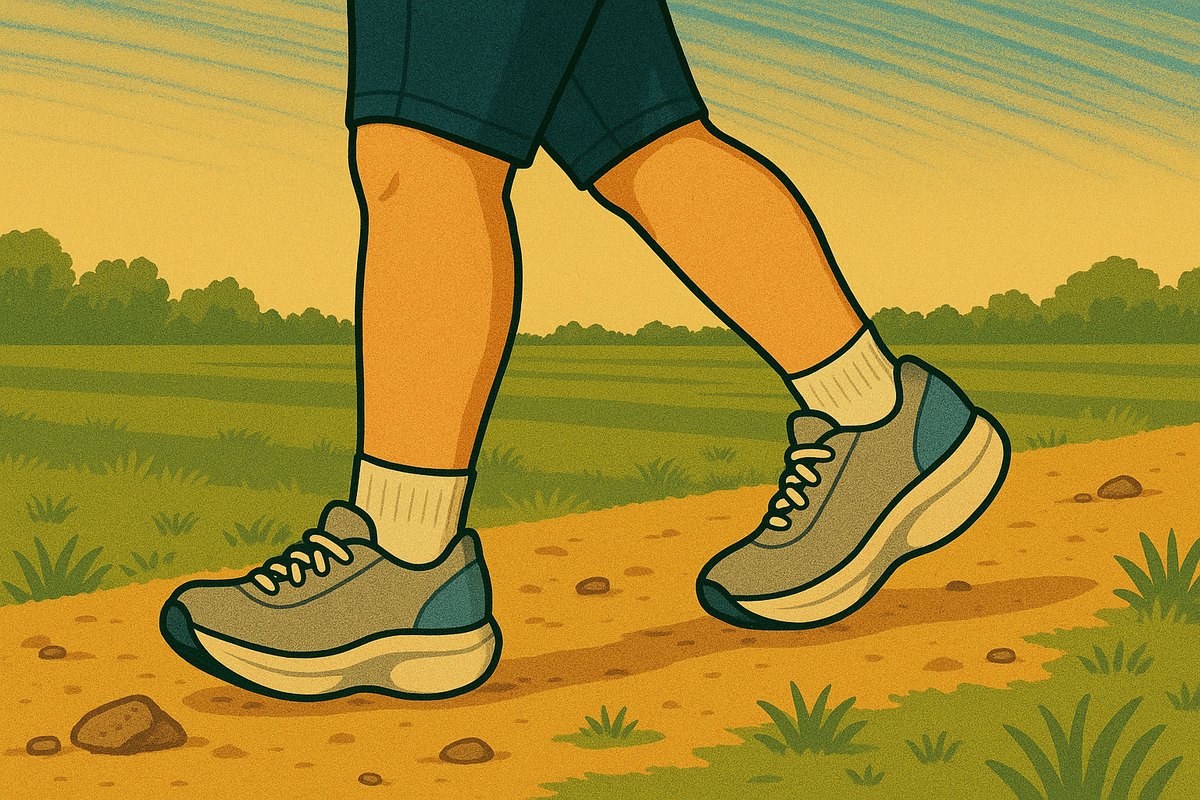
Ever spotted those funky-looking shoes with curved bottoms and wondered who would willingly choose to make walking harder? Turns out, there’s solid science behind this counterintuitive footwear trend!
The &Ldquo;Unstable” Advantage
Remember how your gym teacher made you do exercises on wobbly surfaces to improve your balance? Unstable shoes follow the same principle. They deliberately introduce a bit of controlled chaos into your stride, forcing your body to work harder to stay upright.
These shoes come in two main flavors:
- Anterior-posterior (AP) unstable shoes: Think of these as mini seesaws under your feet, with curved bottoms from heel to toe (like MBT shoes)
- Medial-lateral (ML) unstable shoes: These rock side-to-side, challenging your stability from left to right
It’s like carrying a cup of coffee filled to the brim—your body has to make constant tiny adjustments to prevent a spill. These micro-corrections strengthen neglected muscles and sharpen your body’s position sense (proprioception).
What Happens When You Wear Them?
When researchers put these shoes to the test, they found some interesting changes in how people move:
Your joints move differently Both types increase joint angles, but in different ways. AP unstable shoes primarily affect your forward motion, increasing ankle and knee bending. ML unstable shoes challenge your side-to-side stability, working different muscle groups.
Your muscles work harder Those wobbly soles wake up muscles that have been snoozing in your regular shoes—particularly the smaller stabilizing muscles in your feet and ankles that don’t usually get much action. Think of it as giving those bench-warming players some game time!
Your impact forces change Here’s a pleasant surprise: despite making you work harder, unstable shoes actually reduce the impact forces on your joints. It’s like adding more suspension to your body’s shock absorption system.
Who Might Benefit?
Research suggests that different unstable shoe types might suit different people:
AP unstable shoes (the heel-to-toe rockers) seem better suited for fully developed adults. They’re often marketed for back pain and posture improvement.
ML unstable shoes (the side-to-side wobblers) might be particularly beneficial for children and adolescents, potentially helping develop better foot strength and balance from an early age. They’re also great for anyone looking to improve ankle stability.
Should You Try Them?
Before you rush out to buy a pair, consider these tips:
Start slow: Your body needs time to adapt to the new challenges. Begin with short periods (15-20 minutes) and gradually increase.
Match the shoe to your needs: If you have knee issues, AP unstable shoes might help by shifting stress away from your knees. For ankle stability work, ML unstable shoes could be better.
Listen to your body: Some initial muscle soreness is normal (those sleeping muscles are waking up!), but pain isn’t. If something hurts, back off.
They’re not for everyone: If you have existing balance problems or certain foot conditions, check with a healthcare provider first.
Consider when to wear them: These aren’t your everyday, all-purpose shoes. Think of them as training tools rather than your go-to footwear.
The Comfort Check
Here’s perhaps the most practical finding from the research: the “comfort filter paradigm.” Simply put, if a shoe feels comfortable to you, it’s probably working with your body’s natural mechanics rather than against them.
So while unstable shoes intentionally challenge your stability, they shouldn’t feel painful or extremely awkward. Your body is smarter than you think—trust its feedback!
Whether you’re looking to strengthen forgotten foot muscles, improve your balance, or just try something different in your fitness routine, unstable footwear offers an interesting option. It’s like turning your ordinary walk into a mini-workout, one wobbly step at a time.
This article is based on research by Huiyu Zhou and Ukadike Chris Ugbolue published in Physical Activity and Health, Volume 8, Number 1, 2024.
Discover More
- Can Creatine Save Your Workout When Cutting Carbs?
- Carnivore Diet for Athletes: Do You Need Carbs After All?
- Mix It Up! How to Combine Cardio and Strength Training for Maximum Results
- Rocking Your Walk: How Unstable Shoes Could Strengthen Your Feet and Improve Your Balance
- Trail Running Safety: Navigate the Path to Injury-Free Adventures
- Tech Your Way to Better Fitness: How Older Adults Are Using Digital Tools to Stay Active
- Rest Periods Matter: Finding Your Sweet Spot for High-Intensity Sprint Training
- Supercharge Your Jump: How Adding Bands to Your Deadlift Can Boost Performance
- Caffeine Before Exercise: Is Your Pre-Workout Cup of Joe Actually Helping You Burn Fat?
- Paws-Itively Perfect Exercise: How Your Dog Can Be Your Best Workout Partner
- The Long and Short of It: How Pole Length Can Boost Your Cross-Country Skiing Performance
- Time-Restricted Eating: Get Leaner Without Losing Your Gains
- Boost Your Strength & Shed Fat: Essential Amino Acids + Resistance Training
- Finding Your Perfect Fit: How Footwear Affects Performance and Injury Risk
- HIIT vs. Moderate Exercise: The Mood Rollercoaster Your Workout Takes You On
- Hydration Hype: Do Specialty Drinks Boost Exercise Performance?
- Move It or Lose It: How Your Daily Movement Patterns Affect Your Lifespan
- Moving Matters: How Small Steps Can Keep You Stronger for Longer
- Say Cheese! How Adding Cheese to Resistance Training Can Improve Your Body and Gut Health
- Take Your Workout to the Great Outdoors: How Nature Boosts Your Exercise Benefits See more
